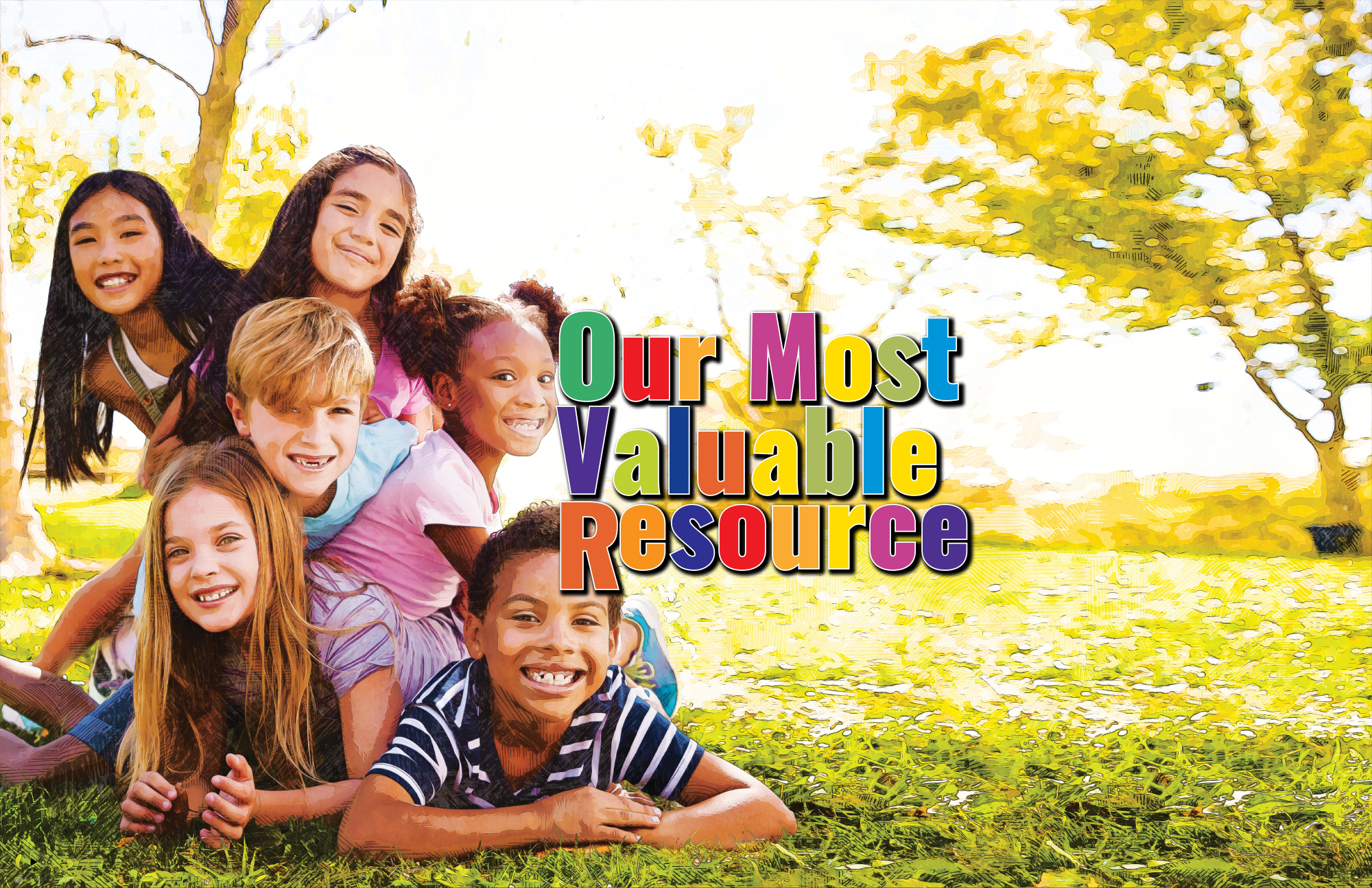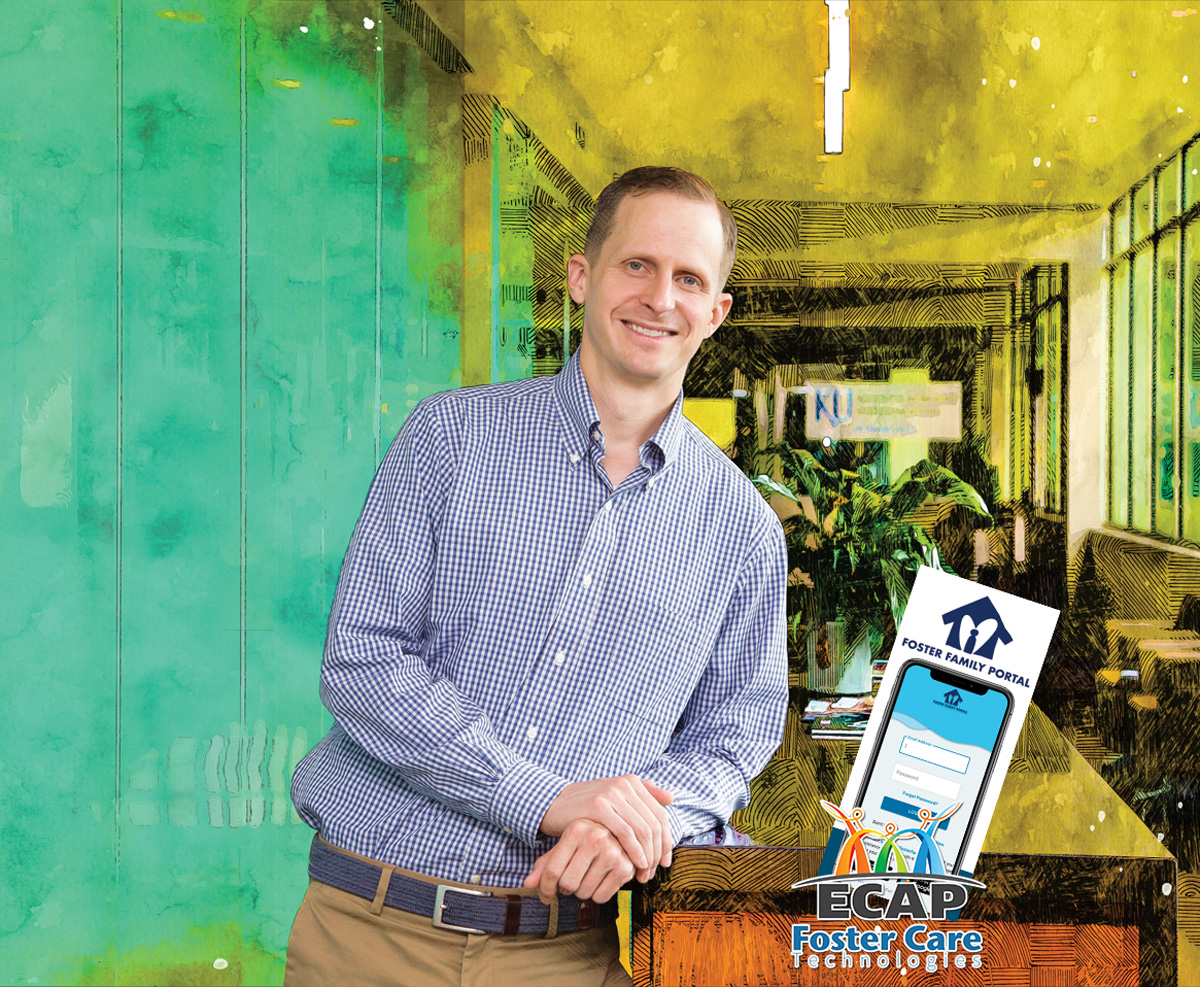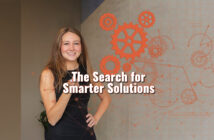| story by | |
| photos by | Steven Hertzog |
| OPEN A PDF OF THE ARTICLE |
This KU Innovation Park company provides software that helps child welfare agencies place children in the best homes possible.

Our Most Valuable Resource
When most of us hear the term “software development,” we might envision a person sitting at a computer inputting code all day and not doing much else. Beyond that, out of sight, out of mind. But software development is so much more than just a person at a computer. It’s the process of designing, creating, testing and maintaining vital software applications. It involves the use of computer science, engineering and mathematical analysis, making life easier and more convenient for the rest of us.
Ricardo Villadiego, Forbes Technology Council member, explains in his article “Why Software Is the Most Important Catalyst for Social Change” that he believes the world will be a far better place within our lifespans. “I’m a technological optimist. As technology accelerates, its ability to uplift society in general accelerates. Software development can be the key to unlocking the potential of our technological age.”
The digital tools software developers create daily enable innovation, efficiency and productivity in nearly every industry—health, education, business, entertainment, finance, agriculture—by streamlining their operations, optimizing their processes and improving the quality of their services. They can provide access to information, communication and education to people all over the world. And they can reduce negative impact on the environment through digitization, automation and optimization of resources like energy, transportation and waste management.
Advancement in software development has had a profound impact on the modern world, and the applications created through that process can help the rest of us drive a positive change in society as a whole.
Changing the Landscape
One cutting-edge software company that got its start right here in Lawrence is Foster Care Technologies (FCT). Created in 2014 by the then Bioscience & Technology Business Center (BTBC), now KU Innovation Park (KUIP), the idea of Foster Care Tech., according to its website, actually began in 2010 as a vision by a child welfare agency of transforming foster care for the better. This agency created and integrated ECAP (Every Child a Priority) software, a research-backed placement-matching system, into its intake operations hoping to improve the future of countless children in foster care.
Then, in 2013, the School of Social Welfare at the University of Kansas illuminated the impact of ECAP through its comprehensive research, showcasing the improvements in placement stability and permanency, while emphasizing the cost savings for foster care agencies. This ultimately led to the creation in 2014 of Foster Care Technologies.
Early on, when KUIP was still the BTBC, TFI Family Services, which provides services such as foster and kinship care, adoption, counseling support and education, prevention services, visitation and exchange centers, and numerous other child welfare services to the community, approached the BTBC as a local business incubator known to help create and nourish small businesses. Knowing its innovative software could help child welfare agencies across the country but not fully equipped to create a business around the software, the BTBC helped finance and create Foster Care Technologies.
“Forming a company was the best way to get this product into as many agencies as possible across the country,” says Paul Epp, CEO of Foster Care Tech. “TFI was a company with a great new technology, and the BTBC’s mission was to create jobs and help commercialize great ideas. They had the resources and the knowledge, and they thought it would be a good idea.”
According to the FCT website, ECAP is “changing the foster care landscape one child at a time.” Using cutting-edge algorithms, a deep understanding of child welfare and the power of community, the software helps child welfare agencies find children safe and stable placements faster and with fewer disruptions. It’s “a unique approach to foster care placements that prioritizes the child’s needs and ensures lasting, positive outcomes.” ECAP creates a 22.5% boost in placement stability and cuts down time to permanency by more than 50 days.

Paul Epp, VP of Foster Care Technologies
Streamlining the Process
Epp says that the foster care placement process can sometimes have no rhyme or reason, and can be a very stressful situation for all involved. “A lot of these placement decisions are made late at night when you have the child perhaps sitting a few feet away from you while you’re making this incredibly important decision—the stakes are incredibly high.”
He explains that if agencies had all the time in the world, they would capture every data point about a child, give each child a full interview, size the child up in every way possible and make a good decision about where that child ought to be placed. “But these things happen at a point in time, and you only have so much time, and you only get so much data, even if you do gather as much information as you possibly can,” Epp continues. “And so we need to focus on the things that we can tell matter most to placement and ignore the things that we just don’t see any evidence for being relevant.”
The ECAP software was developed to do just that: provide a framework that agencies can use to make those relevant decisions more quickly. It systemizes the placement process and decision-making so agency staff considers the most important things involved, he says. “TFI was trying to use a data-driven approach to determine which homes would be better than others for children who come into care. Too often, agencies use the ‘who said yes’ model, where workers end up placing the child with the first person they call who says yes regardless of whether there is any evidence that it would be a great placement.”
Epp explains that early on before ECAP software existed, the system was very disorganized. Agencies kept physical Rolodexes, notecards, maybe a spreadsheet of options for placement. It was “not as careful as we can be when using the software to make that decision. The software helps guide that decision toward something that will create a better experience for the children and the families, and the agencies that serve them.”
When using ECAP, agency members enter information about a child and the families, and the software provides lists and tools to filter those lists and differentiate ways to consider the placement. The agency “makes the decision based on what it’s seeing in the software, what the available options are, what the indications are from those families,” he continues. “They look at the available options, and then they record that decision and see how well it works. Ultimately, a human being makes the final decision, and that’s on purpose.”
Working With Others
Foster Care Tech. (outside of parent company TFI, which is headquartered in Emporia and has operations in five states and employees across the world) remains based in the Kansas City area with resources across the globe. It works directly with the agencies that purchase its software, both public and private, on both state and county levels. And it also works with other tech companies.
“We typically embed our software within larger social services software systems,” Epp says. “We work with several technology companies to provide child welfare agencies that help us embed ECAP into their systems so we can help guide placement decisions for an entire agency. Many of our partners are global companies … such as Deloitte and Microsoft.”
LOCAL MATTERS
Our Local Advertisers – Making a Positive Impact
Right now, Foster Care Tech. is working with a large company that is implementing a new child welfare information system for a large state, and ECAP is the placement module for this system. “We have to work with that company in order to offer our software through theirs, because the customer has the contract with that technology company, and we are a subcontracter. So it makes the software better in the sense that it allows the customer to more easily use it based on what they have already purchased.”
Epp says another product FCT offers that connects to ECAP is a foster family portal, which is a mobile app that provides parents with a channel to give information to agencies and to also participate in the process of placement.
The original ECAP was very Kansas specific, he explains, and FCT generalized the technology and expanded it so that it could be used in any state or jurisdiction. “That allowed us to get customers all over the country. And then as we did that, we found a need for this foster family portal mobile app system, and so we expanded to create that product, which connects to ECAP but can also be delivered independently.”
Looking To Expand
On a daily basis, the FCT team responds to support requests, continuously improves the system and works on new features and functions to enhance the current software. “We behave much like any other software company,” he explains, “running development cycles, looking at issues that come up, taking feedback from customers, checking in on customers, looking for new customers, that sort of stuff.”
Epp says FCT tries to work with the states because those are the largest entities, but trying to get those contracts can be a challenge for small companies. The company worked on one contract with a state for eight years. “We want to be in as many of those as possible, because that’s how we can scale the impact that ECAP can have. We already have a big head-start on knowing what’s important for placement, but we don’t know everything that’s important to placement. That’s why we need ECAP to be used by as many agencies as possible, so we can see what it’s revealing about the placement process in different jurisdictions, which is feedback we can use to make the system even better over time.”
One of the biggest hurdles FCT faces is competing for contracts with large corporations. He says there are long sales cycles that larger companies can endure because they have more diversification and more money, which means they can survive longer while waiting for government contracts to become available. “These bureaucratic processes do not help child welfare, but this is often the only way these large organizations can purchase new technologies,” he explains.
Epp says FCT has had several meetings with agencies where people on the program side will say they really want to work with them but aren’t authorized to make that decision. So they have to go through a process. It’s about long cycles, lots of paperwork and lots of rules and regulations. “Time is money. We have to fund our operations the whole time we’re waiting for those long sales cycles,” he adds.
A Systematic Approach
Technology can be used in all sorts of creative ways to improve people’s lives, but child welfare technology is not a simple concept of just create a software and then kids will have better lives, Epp explains. “The challenge is to be creative about how you apply technology so you can deliver benefits that you might not ever have imagined.”
He says Foster Care Tech. is going to continue developing and expanding products, while also looking for ways to incorporate other technologies to improve child welfare more generally. “I see more partnerships coming into play, more creative uses of technology within the child welfare domain. Whether that’s AI (artificial intelligence) or blockchain technology for digital identity, there are some real opportunities to fix some issues with the way the child welfare system works.”
As useful as technology is in improving problems, he continues, those working in child welfare have a view of one of the most desperate parts of society, where children have to be removed from their homes or have no homes to begin with. “Technology can go a long way to help them, but you have to be intentional about how you create and deliver it, because simply throwing technology at a problem won’t get it to go away,” Epp adds.
He believes in a more systemic approach. “You can’t just sprinkle technology on top of these problems and expect everything to get better. We also need to look at the ways that these stories play out and think about how the people living in our communities can benefit from other types of help. Anything that can help keep kids out of the foster care system in the first place is worth thinking about.”




